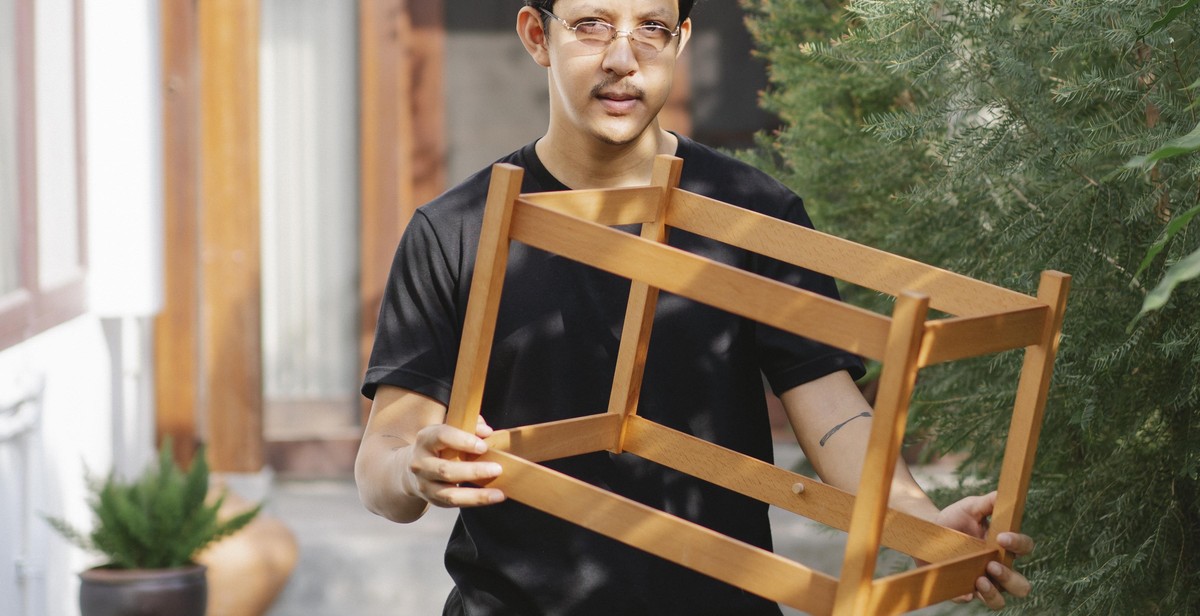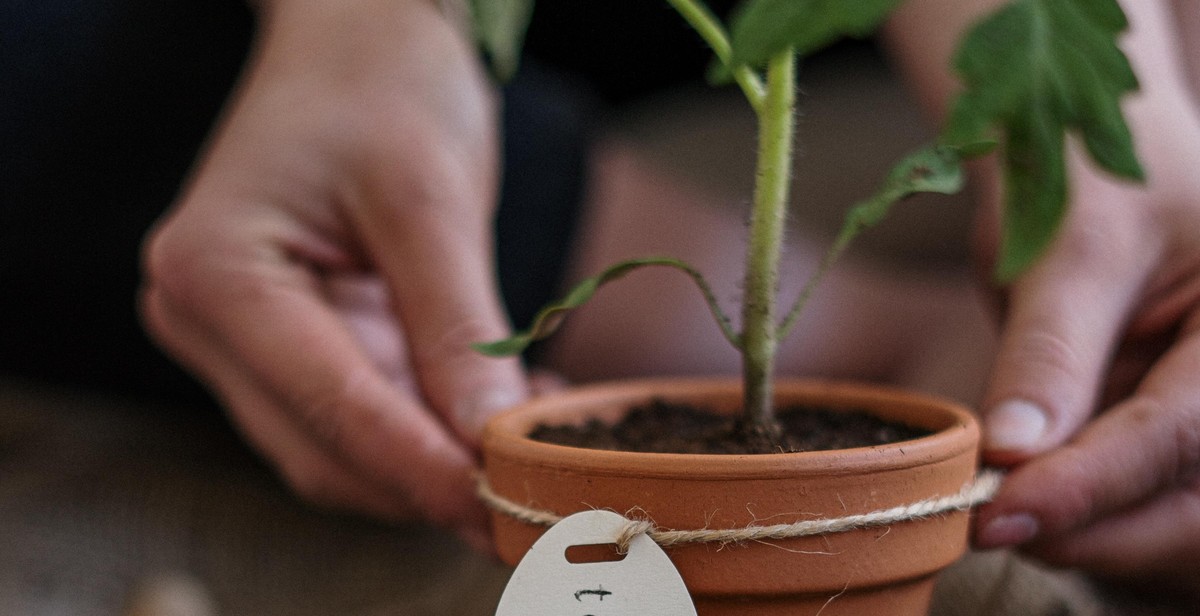Introduction
Vertical gardens are a great way to add greenery to your outdoor or indoor space, especially if you have limited space. A vertical garden can be created using a variety of materials, but one of the most popular and cost-effective options is pallets. Using pallets for a vertical garden is a great DIY project that can be completed in a few hours, and it is a sustainable way to upcycle old pallets that might otherwise end up in a landfill.
In this article, we will guide you through the steps to build a DIY vertical garden with pallets. We will cover everything from selecting the right pallets to preparing them for planting. We will also provide tips on choosing the right plants for your vertical garden and how to care for them once they are planted.
Why Build a Vertical Garden with Pallets?
Using pallets for a vertical garden has many benefits. Firstly, it is an eco-friendly option that repurposes old pallets that might otherwise be discarded. Secondly, pallets are easy to find and inexpensive, making it a cost-effective way to create a vertical garden. Additionally, pallets are versatile and can be easily customized to suit your space and style. Finally, a vertical garden with pallets is a great way to add a unique and eye-catching feature to your home or garden.
What You Will Need
Before you start building your vertical garden with pallets, you will need to gather a few materials. Here is a list of what you will need:
- One or more pallets
- Landscape fabric or burlap
- Staple gun and staples
- Potting soil
- Plants of your choice
- Saw, hammer, and nails (optional)

Why Build a Vertical Garden with Pallets?
Vertical gardening is a great way to maximize your garden space and create a beautiful and functional garden. It allows you to grow more plants in a small area, making it ideal for those with limited space or small gardens. Not only does it save space, but it also offers a range of benefits that traditional gardening methods cannot provide.
Benefits of Vertical Gardening
- Maximizes garden space
- Reduces the need for weeding and tilling
- Improves air circulation
- Reduces the risk of disease and pests
- Allows for better water and nutrient absorption
- Creates a beautiful and unique garden design
Benefits of Using Pallets
Using pallets to build your vertical garden has several benefits:
- Cost-effective: Pallets are inexpensive and can often be found for free
- Eco-friendly: Pallets are often made from recycled materials
- Durable: Pallets are designed to withstand heavy loads and can last for years
- Easy to work with: Pallets are easy to find and can be modified to fit your garden design
By building a vertical garden with pallets, you can enjoy all the benefits of vertical gardening while also creating an eco-friendly and cost-effective garden design.

Materials Needed
Pallets
For this DIY project, you will need one or more pallets. You can find pallets at local hardware or home improvement stores, or check with local businesses that may have extra pallets they are willing to give away for free.
Tools
- Measuring tape
- Saw
- Drill with drill bits
- Screwdriver
- Sandpaper
- Gloves
- Safety glasses
Other Materials
- Landscaping fabric
- Staple gun and staples
- Soil
- Plants
Landscaping fabric will be used to line the pallets and prevent soil from falling out. You will need a staple gun and staples to attach the fabric to the pallets.
The soil and plants you choose will depend on your preferences and the environment in which the vertical garden will be located. Be sure to choose plants that are suitable for vertical gardening and have similar water and light requirements.
| Pallets | Tools | Other Materials |
|---|---|---|
| One or more pallets | Measuring tape, Saw, Drill with drill bits, Screwdriver, Sandpaper, Gloves, Safety glasses | Landscaping fabric, Staple gun and staples, Soil, Plants |

Preparing the Pallets
Before starting to build your DIY vertical garden with pallets, it is important to prepare the pallets properly. This will ensure that they are safe for use and will last for a long time. The preparation process involves cleaning and sanding the pallets, as well as adding a backing for support.
Cleaning and Sanding
The first step in preparing the pallets is to clean them thoroughly. Pallets are often used for shipping and may have dirt, grime, or other debris on them. Use a stiff-bristled brush or pressure washer to scrub the pallets clean. Allow them to dry completely before moving on to the next step.
Next, sand the pallets to remove any rough spots or splinters. Use a coarse sandpaper to start, then switch to a finer grit to smooth out the surface. Sanding the pallets will make them easier to handle and reduce the risk of injury when assembling your vertical garden.
Adding a Backing
Once the pallets are cleaned and sanded, it is time to add a backing for support. This will prevent soil and plants from falling out of the pallets and provide a stable surface for mounting them to a wall or fence.
You can use a variety of materials for the backing, such as landscape fabric, chicken wire, or plywood. Cut the backing material to fit the size of the pallets and attach it securely with staples or screws. Make sure the backing is flush with the edges of the pallets and does not leave any gaps where soil or plants could escape.
With the pallets cleaned, sanded, and backed, you are now ready to move on to the next step in building your DIY vertical garden.

Building the Vertical Garden
Building a DIY vertical garden with pallets is a fun and rewarding project that can add a touch of greenery to any space. Here are the steps to follow:
Attaching the Pots
The first step is to attach the pots to the pallet. You can use a variety of materials, including zip ties, wire, or metal brackets. Make sure to space the pots evenly on the pallet and secure them tightly to prevent them from falling off.
When choosing the pots for your vertical garden, consider using lightweight plastic containers or fabric pots to minimize the weight on the pallet. You can also use recycled materials such as tin cans or milk jugs to create a rustic look.
Hanging the Garden
Once you have attached the pots to the pallet, it’s time to hang the garden. You can use chains, ropes, or hooks to hang the pallet on a wall or fence. Make sure to choose a sturdy location that can support the weight of the pallet and the plants.
When hanging the garden, consider the amount of sunlight and water the plants will need. Make sure to hang the pallet in a location that receives adequate sunlight and is easy to water.
By following these steps, you can create a beautiful and functional vertical garden that will enhance any space.

Planting Your Vertical Garden
Now that your DIY vertical garden is complete, it’s time to start planting. Here are some tips to ensure your plants thrive:
1. Choose the Right Plants
Not all plants are suitable for vertical gardens. Choose plants that are lightweight, have shallow roots, and don’t require too much soil. Some good options include:
- Herbs: basil, parsley, thyme, oregano
- Succulents: sedum, echeveria, sempervivum
- Flowers: petunias, impatiens, pansies
2. Prep the Soil
Before planting, make sure the soil is prepared. Use a lightweight potting mix and add some slow-release fertilizer to ensure your plants get the nutrients they need.
3. Plant Your Garden
Starting from the top of your vertical garden, plant your chosen plants in each pocket or planter. Make sure you leave enough space for the plants to grow and spread out.
4. Water and Maintain
Once your plants are in place, water them thoroughly and regularly. Keep an eye on your garden and prune any dead or wilted leaves. Fertilize as needed to keep your plants healthy and vibrant.
5. Enjoy Your Garden
Your DIY vertical garden is now complete and ready to be enjoyed. Admire your handiwork and watch as your plants grow and thrive in their new home.

Maintaining Your Vertical Garden
Once you have built your DIY vertical garden with pallets, it’s important to maintain it properly to ensure healthy plant growth. Here are some tips for maintaining your vertical garden:
Watering
Watering is crucial for the health of your plants. Make sure to water your vertical garden regularly, especially during hot and dry weather. However, be careful not to overwater as it can lead to root rot. Test the soil moisture level by sticking your finger in the soil up to your knuckle. If it feels dry, it’s time to water. To avoid damaging the plants, use a gentle watering technique such as a drip irrigation system or a watering can with a fine nozzle.
Fertilizing
Vertical gardens require regular fertilization to ensure healthy growth. You can use organic fertilizers such as compost tea or fish emulsion. Apply the fertilizer according to the instructions on the package, and avoid over-fertilizing as it can harm the plants.
Pruning
Pruning is essential to maintain the shape and size of your vertical garden. Regularly remove any dead, damaged, or diseased leaves and stems. This will also encourage new growth and prevent pests and diseases from spreading. Use clean and sharp pruning shears to avoid damaging the plants.
| Task | Frequency |
|---|---|
| Watering | Regularly, when soil feels dry |
| Fertilizing | Once a month |
| Pruning | As needed to remove dead, damaged, or diseased leaves and stems |

Conclusion
Building a DIY vertical garden with pallets is a great way to create a beautiful and functional garden space without breaking the bank. With just a few simple tools and materials, you can transform an old pallet into a stunning vertical garden that will add a touch of greenery to any space.
Tips for Success
- Choose a pallet that is in good condition and free from any chemicals or toxins.
- Use a high-quality potting soil and choose plants that are well-suited for vertical gardening.
- Water your vertical garden regularly and be sure to provide enough sunlight for your plants to thrive.
- Consider adding a drip irrigation system to make watering your vertical garden even easier.
Benefits of Vertical Gardening
Vertical gardening offers a number of benefits, including:
- Maximizing your growing space, especially if you have limited outdoor space.
- Reducing the amount of bending and kneeling required for gardening.
- Creating a beautiful and unique garden display.
- Providing fresh herbs and vegetables for cooking.
Get Creative
Don’t be afraid to get creative with your vertical garden! You can add decorative elements like fairy lights or paint your pallet to match your outdoor decor. The possibilities are endless!
| Materials | Tools |
|---|---|
| Pallet | Drill |
| Landscape fabric | Saw |
| Potting soil | Staple gun |
| Plants | Hammer |
With these simple steps and tips, you can create a beautiful and functional DIY vertical garden with pallets. Start your own today and enjoy the benefits of fresh herbs, vegetables, and beautiful greenery in your own space!
